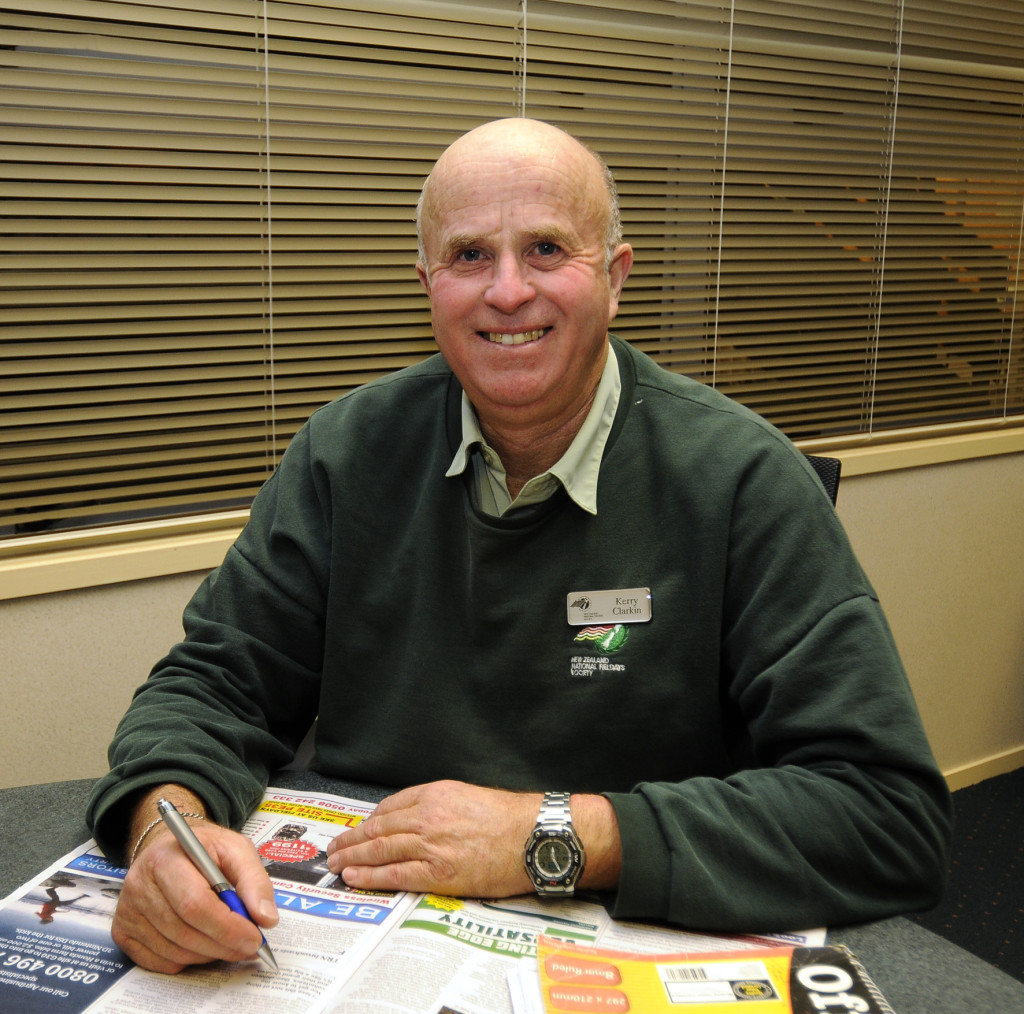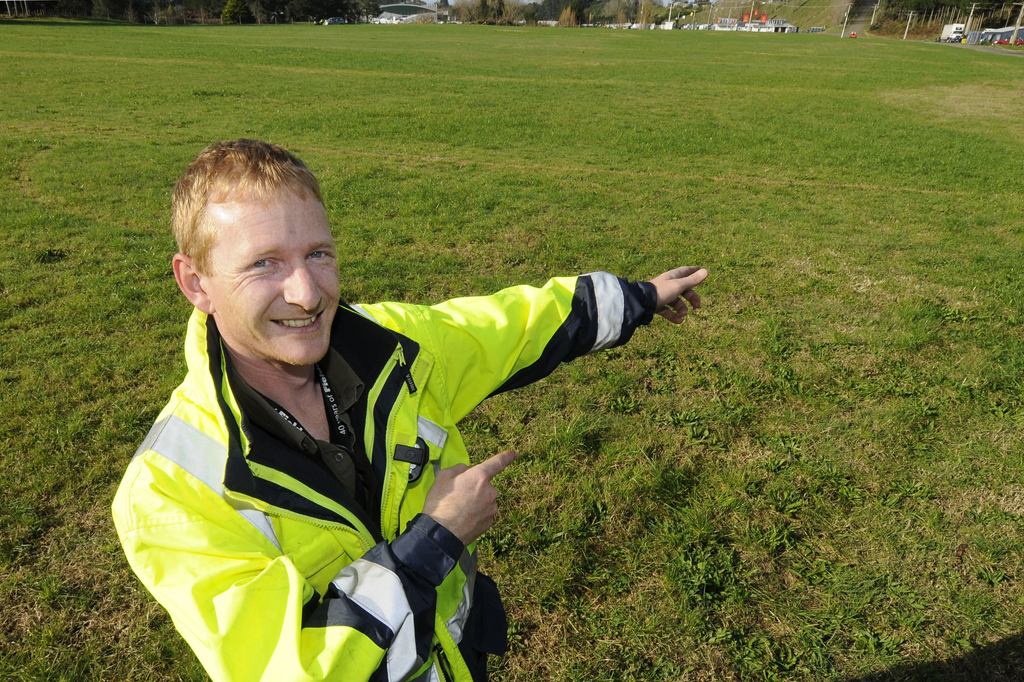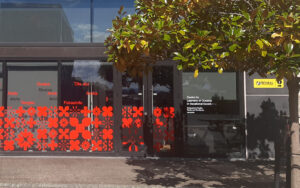Volunteers work for the love of it
It shouldn’t work but somehow it just does – a bit like a bumble bee.
A sixteen-year-old schoolboy steps off a bus outside Hamilton’s St Johns College, turns, and heads off in the opposite direction. He has no money in his pockets and no way of getting home – a thought that doesn’t occur to him until he’s walked for more than an hour.
Thinking of his classmates stuck at school studying for School C exams, he looks both ways, jumps a fence and smirks. He’s made it. Following a crowd of gumboot-clad people, he gets 10 yards into Te Rapa Racecourse and bumps into someone familiar – his parents.
Kerry Clarkin’s experience of the first ever Fieldays didn’t go exactly to plan, but at least he found a ride home.

The National Agricultural Fieldays moved out to Mystery Creek two years later in 1971 and Clarkin was there, legitimately this time, parking cars for the Young Farmers.
Today, the 58-year-old former skiving schoolboy is about to be involved in his 40th Fieldays.
As member and volunteer coordinator, Clarkin’s role is to make sure the 250-plus volunteers and members of the New Zealand Fieldays Society are well looked after during the event. It’s not a straightforward venture, and Clarkin is kept busy organising everything from tickets and goodie bags to “sausage rolls and a few beers” at the end of the day. Over the four days a base is set up for volunteers to take time out, have something to eat and socialise.
Clarkin says the volunteers are a “tremendous part” of running the Fieldays and his main priority is to ensure they are taken care of. “We try and make sure they feel as though they’re wanted and they get something in return.”
There are two types of volunteer at the Fieldays: members of the New Zealand Fieldays Society – the not for profit organisation that runs Fieldays and Mystery Creek Events Centre – and general volunteers. There are also 34 permanent Mystery Creek staff, and Clarkin is the link. “It’s a bit like a bumble bee,” assistant Brian Roberts explains, “it shouldn’t work, but somehow it just does.”
Volunteers come from as close as Hamilton and as far as Whangarei, Auckland and Taranaki. Clarkin says many are farmers and are up at 4am milking before they head to Mystery Creek to help out for the day. “Most still have their own responsibilities, so they’re up for an hour, an hour and a half, working on the farm, coming out to the Fieldays for over 12 hours, then heading home and sometimes spending another hour or so working,” he says.
And they are involved in all sorts – car parking, standing at the gates, running competitions, handing out Fieldays Exhibitors, organising exhibits, to name a few.
In fact Clarkin, a dairy farmer, is himself a volunteer. Thousands of hours, countless 5am starts and four decades later, Clarkin is still just a schoolboy jumping a fence. “It’s the buzz of the whole thing, it’s meeting people, from governor generals and prime ministers to some poor bloke who’s stuck in the mud on the side of the road.”
He has two assistants, Roberts and Andrew Taylor, and the three of them lark around in the Mystery Creek conference room while talking about the job. Clarkin acknowledges that it’s a huge commitment, with planning of the next one starting as soon as the event is over, but says it’s well worth their while. “Brian and I would spend one or two days a week out here [Mystery Creek] year round, plus spend at least an hour on the phone every second day.”
He says it isn’t uncommon to get phone calls at 10 o’clock at night. “You’ll get calls from farmers who live in the middle of nowhere, standing on top of a hill, on one foot, waving their arm in the air trying to get reception, saying, ‘hey I had an idea last night when I was out shifting the sheep.’”
“It’s Fieldays fever,” Roberts chips in, “you just can’t get rid of it.”
“Anyway, if Brian didn’t have something to keep him busy he would drive his wife round the bend,” Clarkin says.
“I still drive her around the bend, but at least I have another purpose,” Roberts laughs.
Apart from being mentally and physically stimulating, Clarkin says for him it’s all about the people he works with. “Present company excluded,” he says and the other two burst out laughing. “Actually, don’t print that, these two are worth a fortune to me.”
The Fieldays have become an obsession for Clarkin and he says it’s been an experience being involved from the early stages. “I can remember when we hit $1 million turnover and we were like wow, we’re starting to do pretty well. We had no idea.
“I’ve seen firms that have grown from just little tiny pup tents on site to huge conglomerates.”
Fieldays has always been an event based on innovation and Clarkin says this is the area where he has seen the biggest shift. “Forty years ago when you looked at agriculture in New Zealand, we were at a turning point and you started getting things like disc mowers, combine harvesters and all that sort of thing, so it was very much a tractor, machinery type show. It has changed from that because farming has become very technical.”
For example, last year’s main exhibition in the Innovation For Future Profit feature was a device called CellSense which allows farmers to access information about milk quality in real time.
Starting out parking cars as a Young Farmer, Clarkin went on to run the parking and traffic for the event, was chairman of the Exhibits Committee, vice president and president of the Fieldays Society, a member of the board and “lots of other little things in between”.
So the big question. Suits or gumboots? “Gumboots,” says Clarkin without hesitation, “during the Fieldays I have to be in a suit and a tie, but I’d rather be out there pushing cars in the mud.”
Speaking of cars, Andrew Taylor chips in: “We always get at least half a dozen people every day that can’t find their cars. They’re always like ’someone’s stolen my car!’”
That’s something volunteer and Chairman of the Parking Committee Lance Enevoldsen can relate to.

“With up to 14,000 cars in three different zones, it’s not uncommon for people to become lost, and disorientated as to which gate they came in and how they got there. Most of the time a ’stolen‘ car turns out to be in another car park.”
He says weather can also make parking the cars interesting. “There’s always somebody stuck somewhere. Anything’s possible. It can be entertaining when it’s quite muddy, we’ve had years where we’re towing and pushing cars into car parks as well as out. It’s rather full on.”
Enevoldsen, who is a managing director at Imageland, moves easily from “framing to farming,” and seems to be on a similar track to Kerry Clarkin.
“It’s all fun at the end of the day, it’s all good people to work with, that’s the main thing. When you’re working with good people I don’t think it matters what you do and that’s part of the reason to be a volunteer – the camaraderie and meeting good people.”
His phone begins to quack like a duck; he grins and explains that it’s the ringtone for someone calling from the Fieldays.
Kerry Clarkin says his father once asked him, “was it worth while missing school that day?”
“It certainly was,” he says.




